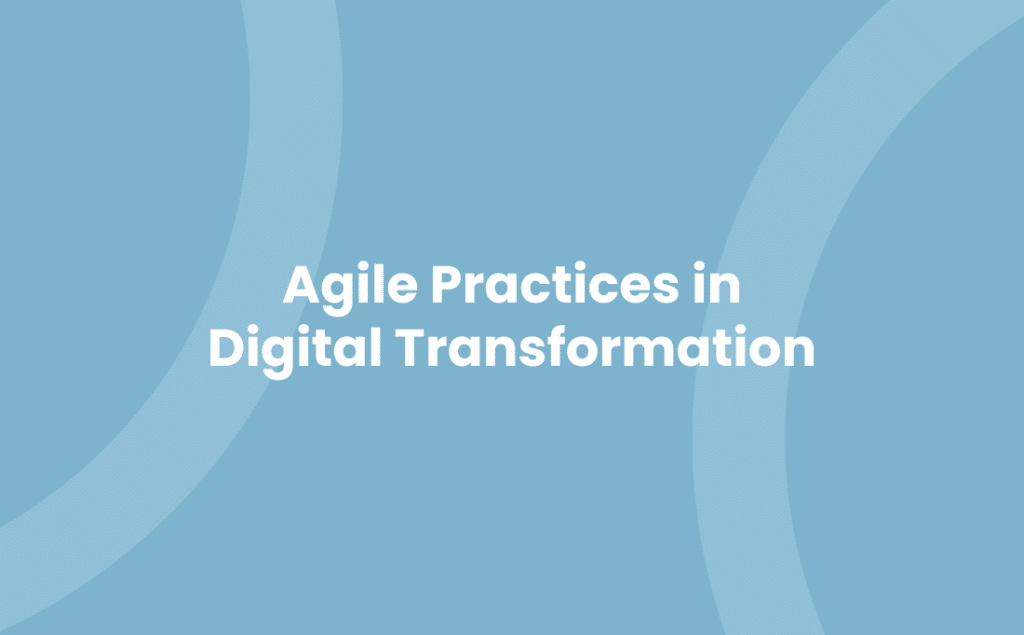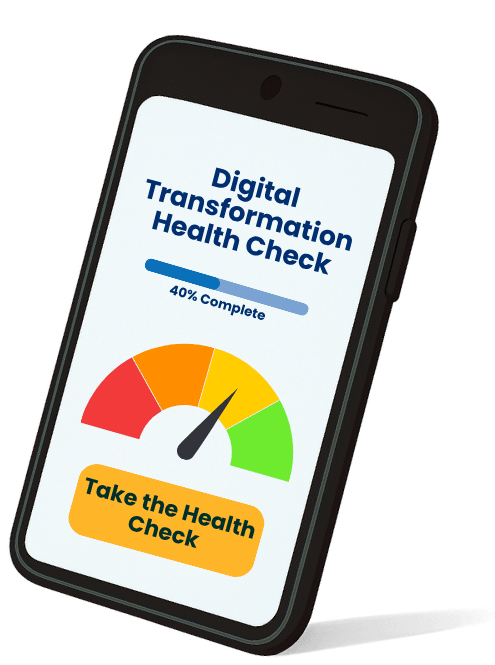In an era dominated by digital innovation, it’s impossible to overlook the significance of digital transformation and the role that Scrum and Agile practices play. As you navigate the labyrinth of today’s tech-driven world, you’ll find these methodologies at the heart of many successful digital strategies.
Understanding Scrum and Agile isn’t just about knowing the buzzwords, it’s about grasping how they can revolutionise your business operations. So, whether you’re a seasoned tech guru or a novice dipping your toes into the digital world, this article will shed light on the pivotal role of these practices in digital transformation. Let’s embark on this enlightening journey together, shall we?
Understanding Digital Transformation
Let’s demystify the concept of digital transformation. It’s not about merely swapping out old tech for the latest software or launching a shinier website. Digital transformation represents a profound change, a fundamental shift in how your business operates and delivers value to customers.
Imagine embarking on a journey, steering your business ship towards unfamiliar territories. These newcomers aren’t merely overseas lands, but rather exciting new digital landscapes. Digital Transformation is that on-going voyage, where your business embraces tech evolution and leverages it to optimise operations and engage customers.
Begin with your business processes. They become streamlined and more efficient, augmenting the way your teams work. Then, the customer service journey undergoes a significant overhaul, enabling improved customer relations and ensuring your clients find exactly what they’re searching for. It’s a ripple effect that touches every facet of your organisation.
Scrum and Agile, two methodologies often regarded as the backbone of tech product development, play key roles in successful digital transformation journeys. The iterative nature of Agile, combined with Scrum’s strategy, brings unmatched transparency, flexibility, and adaptability. This dynamic duo can power-up your digital transformation journey, helping navigate through potential roadblocks and complexities.
With Scrum and Agile firmly in place, your business adopts a culture of continuous improvement. Regular iteration of processes, workplace practices, and strategies become ingrained into the DNA of your organisation. Long story short – your business grows to be more adaptable and ready to meet, head-on, the ever-evolving challenges of the tech world.
Digital transformation isn’t a one-off process but an on-going journey that continually adapts to the shifting digital landscape. Leveraging Scrum and Agile methodologies can be instrumental in ensuring your business not only survives but thrives in these dynamic digital terrains.
Remember, Digital Transformation isn’t simply about technology. It’s about gearing your entire business wheel for a seamless transition into the digital era. It’s in your hands to unlock the potential of Scrum and Agile in driving your organisation’s digital transformation journey.
The Role of Scrum and Agile Practices in Digital Transformation
In a digitally driven landscape, knowing how to manoeuvre your business towards technological shifts brings substantial benefits. Enter Scrum and Agile practices – these methodologies encapsulate crucial elements such as transparency and adaptability that elevate your business towards successful digital transformation.
Scrum, a subset of Agile, presents a practical approach. It embraces change, making your company nimbler in its adjustments. It breaks down complex tasks into manageable ‘sprints’, enhancing efficiency and productivity. Simultaneously, Agile methods contribute to digital transformation by focusing on streamlined processes and enhanced customer engagement.
Scrum and Agile foster a mindset of continuous improvement. Here’s how:
- Sustainable Growth: They enable your enterprise to absorb technology’s pace, fine-tuning your strategies in real-time.
- Deliver Value: Scrum and Agile focus on delivering the highest value features first, ensuring customer satisfaction and marketplace competitiveness.
- Flexibility: Agile keeps your business aligned with market fluctuations, while Scrum helps manage unexpected challenges.
- Transparency: Both methodologies establish a transparent work process, creating an environment of trust and accountability, integral to digital transformation.
- Improved Collaboration: The Scrum framework fosters a collaborative approach, empowering teams to adapt and excel in the new digital terrain.
Scrum and Agile provide your business the toolkit for successful digital transformation. It’s this blend of Agile digital transformation and the incorporation of Scrum in digital transformation that makes these practices indispensable to your business operations in the tech realm. Embrace these methodologies, and you’ll find your organisation is more resilient, productive, and ready to thrive in the digital age.
Case Studies of Scrum and Agile Practices in Digital Transformation
Gleaning insights from case studies can illustrate how Scrum and Agile practices tangibly impact digital transformation. By examining specific instances, it’s possible to discern the effectiveness and adaptability of these methodologies.
- A prominent E-commerce corporation implemented Agile methodologies during their digital transformation process. They identified key objectives and developed an Agile framework to achieve them. Rapid iterations and constant feedback led to consistent progress, with Scrum playing a key role in organising and managing tasks effectively. The result? Accelerated product releases, improved customer satisfaction, and increased revenue.
- One of the UK’s leading healthcare providers integrated Scrum practices into their digital transformation journey. Splitting extensive projects into manageable sprints improved efficiency and transparency. The healthcare provider could swiftly adapt to changes and cut down development time. Notably, this led to enhanced patient services and efficient internal operations.
- Within the telecommunication field, a major UK player leveraged Agile and Scrum in its digital transformation. With constant iterations, quick adaptability, and dedicated Scrum teams, they could drive innovation, stay competitive, and meet customer expectations.
In essence, Scrum and Agile aren’t just about adopting new practices. They’re critical components in fostering an adaptable and user-centric culture. The above cases demonstrate the transformational power and the role of Scrum and Agile practices in the digital transformation context. By embarking on this path, businesses experience heightened transparency, collaborations, and adaptability, embodying the very essence of a digitally transformed entity.
Digital Transformation Strategy: Incorporating Scrum and Agile Practices
Developing an effective digital transformation strategy isn’t a luxury‚ it’s a necessity. It’s critical to understand and, more importantly, to harness the power of Scrum and Agile methodologies in this progress. These Agile frameworks are key components in navigating the digital landscape, fostering innovation and enhancing customer value.
- Understand the Scrum Methodology: Scrum, an integral part of Agile, is an iterative and incremental Agile framework for managing product development. It enables teams to self-organise by encouraging physical co-location or close online collaboration of all team members, and verbal communication among them. Recognise Scrum as your stepping stone in understanding agile digital transformation.
- Agile Practices: In the world of digital transformations, Agile practices are valuable assets. Not only does Agile structure provide for a flexible, incremental approach to product development, it also incorporates customer feedback to facilitate adaption to change, making it a perfect fit for a digital transformation strategy.
- Incorporating Agile into Business: Not restricted to software development, Agile methodologies can permeate into diverse fields, breaking down silos and driving innovation throughout the business.
- Transparency, Flexibility, and Feedback: Agile values encourage transparency, enabling teams to assess project performance in real time. This flexibility and adaptability are indispensable in today’s digital age.
- Agile fostering adaptability: Agile practices, when properly implemented, foster an adaptable, resilient, and customer-centric culture, a defining trait as businesses move through digital transformation.
A few quick start tips:
- New to Scrum? Begin with the basics. Take some time to understand the roles, artifacts, and ceremonies that constitute Scrum.
- Don’t overplan. With Agile, adaptability trumps adherence to a rigid plan. Initiate your projects, get feedback, learn, and course-correct as you go.
- Embrace Agile. Make Agile a company-wide ethos. Foster an open, innovative, and customer-centric culture, virtues synonymous with Agile.
Incorporating Scrum and Agile in your digital transformation strategy doesn’t provide just surface-level benefits. It unlocks a world of possibilities waiting to be explored, accelerating your digital transformation journey.
Overcoming the Challenges in Implementing Scrum and Agile Practices
Adopting Scrum and Agile frameworks can be a complex process. You’ll experience obstacles that can hinder the transition. However, awareness of these difficulties paves the way for an effective strategy to overcome them.
Resistance to Change
Company-wide acceptance of Agile and Scrum in digital transformation can be challenging due to resistance to change. To overcome this, organise comprehensive training sessions. Make your team realise the value of Scrum, its role in promoting adaptability and harnessing innovation – all key to successful digital transformation.
Lack of Experience and Skillset
Inadequacy of experience and the right skills in Agile can pose a problem. To offset this, invest in ongoing education. Upskill your team through certified Agile training programs. Recruit Agile professionals, forming a mature Agile environment within your organisation.
Insufficient Stakeholder Engagement
Stakeholder participation’s absence in Agile practices can lead to misunderstanding and poor alignment with business goals. Strong communication lines can negate these issues, ensuring everyone’s on the same page about Agile principles and benefits to the business.
Overcome Implementation Fears
Fear of the unknown can be a barrier to Agile implementation, making teams revert to traditional methods. Resistance to Agile practices can overcome by emphasising Agile benefits, like accelerating product delivery, fostering customer-centred approaches, and ensuring continuous enhancement.
Through your proactive, deliberate, and informed approach, your organisation can conquer these obstacles. This endeavour paves the way for a successful incorporation of Scrum and Agile design in your digital transformation initiatives.
Conclusion
So, you’ve seen how Scrum and Agile methodologies can power your digital transformation journey. They’re not just buzzwords – they’re practical tools that foster transparency, adaptability, and continuous improvement. Of course, there are challenges to overcome, but with the right approach, you can navigate them. It’s all about comprehensive training, ongoing education, and effective communication. Don’t shy away from change, embrace it. Remember, your digital transformation isn’t a one-off project, it’s a continuous process. By leveraging the power of Scrum and Agile, you’re setting yourself up for success. So, are you ready to take the plunge and transform your business? The digital future awaits.



